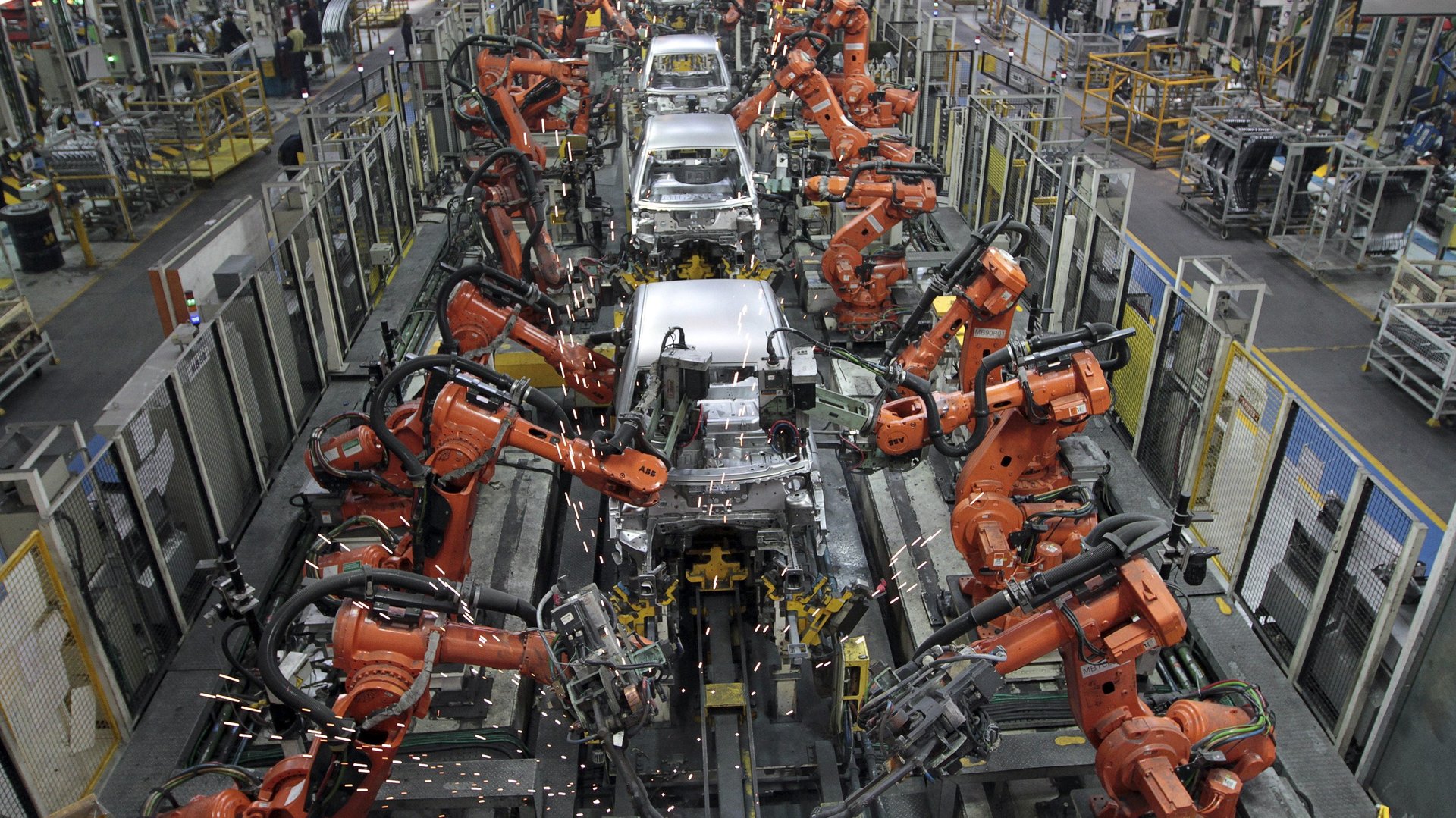What robots? India’s still far from being an automation nation
The robots are coming—but they aren’t here just yet.


The robots are coming—but they aren’t here just yet.
There are only three robots per 10,000 employees in India, according to the 2017 World Robot Statistics (pdf) report issued by non-profit International Federation of Robotics (IFR) on Feb. 07. By comparison, the average robot density in the world was 74 in 2016.
South Korea, top of the leaderboard since 2010, was the most automated country in 2016 with 631 robots per 10,000 workers.
“Robot density is an excellent standard for comparison in order to take into account the differences in the automation degree of the manufacturing industry in various countries,” IFR president Junji Tsuda said in a company press release.
Though India severely lags the rest of the world, it is upping its automation quotient. Robot installations grew 27% (pdf) from 2,065 units in 2015 to 2,625 units in 2016.
By 2020, IFR estimates India will have a total of 6,000 industrial robots.
Across the world, the automotive industry is the biggest customer of industrial robots with a 35% share of the total supply in 2016, IFR’s research revealed.
In India, automotive industry majors are already steering towards an automation-heavy future. Maruti Suzuki’s factory in Haryana employs 7,000 workers and 1,100 robots, and carmaker Ford’s Gujarat plant has automated 90% of its work with 453 robots. Hyundai Motor’s Chennai outpost is swarming with industrial bots, as are the Volkswagen India and Tata Motors’ Pune shop floors. Bajaj Auto, too, has deployed collaborative robots.
Vehicle factories aren’t alone. The electronics and glass sectors, too, are implementing robots on their factory floors. The domestic surgical robotics industry is estimated to grow rapidly to reach $350 million by 2025 as well.